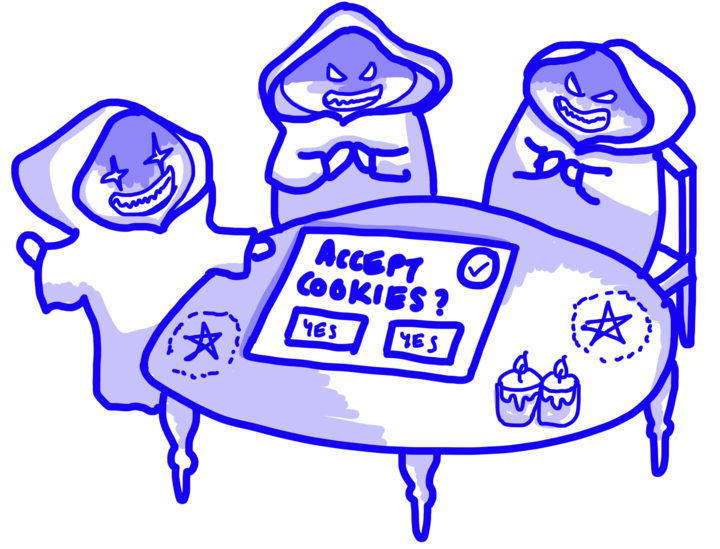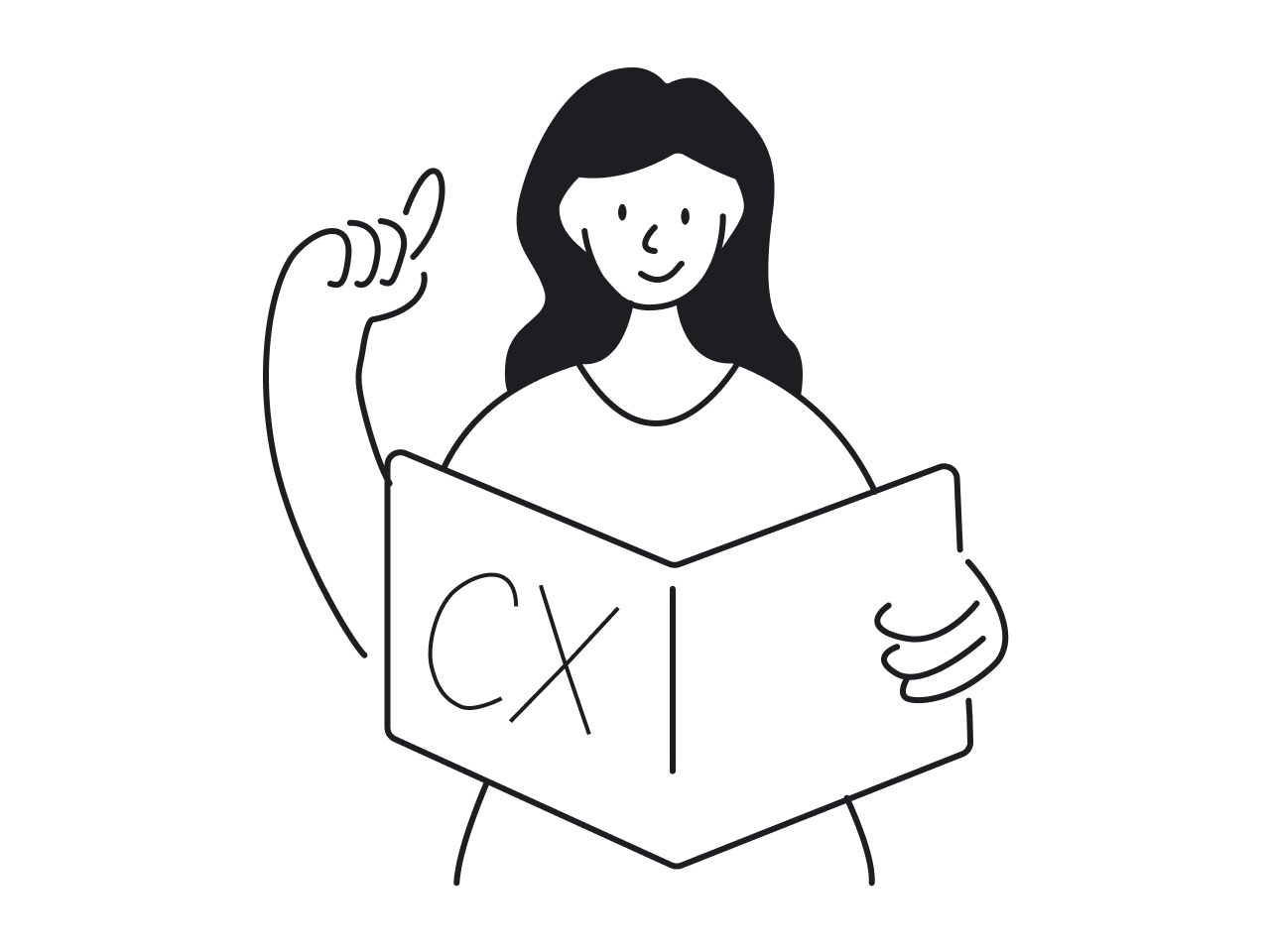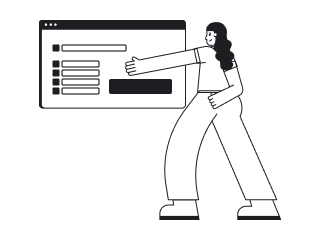People often misunderstand design. “Design is what it looks like”, they say, and design professionals feel deeply insulted.
But when you think about it, how could it be otherwise? People have eyes to see the results of the design process that sticks out of the water. But they can’t read minds to appreciate your 90%-hidden discovery and research unless you explain how the design process works.
We at Eleken UI/UX agency have years of experience in clarifying on family dinners what is this major new product design thing that we do. If you feel like joining us at the imaginary dinner table to listen about what design actually is, you are welcome.
Napkin drawings included.

What is design?
Here’s the definition by a UX guru Don Norman:
“Design is really an act of communication, which means having a deep understanding of the person with whom the designer is communicating.”
That may sound confusing, but only until you see an example of miscommunication. Just like the one on the GIF below.

This door opening phenomenon is called “the Norman door” after Don Norman described it in his iconic book “The Design of Everyday Things”.
The Norman door is basically any door that's confusing or difficult to use because it communicates “push” instead of “pull” and vice versa. If designers had understood the door users deeply enough, they’d have always made intuitive handles. But since they don’t, we have an intuitive explanation of what bad design is.

The Norman doors story brings us to the idea once formulated by Steve Jobs:
“Design isn't just what it looks like and feels like — design is how it works.”
Now, what about product design?
When we know that “design” means figuring out how something is supposed to work, then we can apply this definition to other forms of design. For example:
- Interior design is responsible for figuring out how home or office spaces should work.
- Logo design means determining what messages should a logotype convey, and what colors and shapes would help achieve that.
- Product design, as we can logically conclude, takes care of how products are supposed to work. Sometimes “products” refer to material objects, such as furniture, electronics, or cars. But when IT guys say “product design” they typically speak about software products.
But product design, actually, goes a bit deeper than that, touching on the product design meaning, the product designer vs product manager relationship, and even the role of product design AI tools.
In Eleken, we define product design as a user-centered, complex and never-ending process of creating meaningful experiences for users by defining the users' problems and finding solutions for these problems.
Let’s decode the three main characteristics of product design.
Product design is a user-centered process
In 2009, Airbnb was close to going bust. Like so many startups, they had launched but barely anyone noticed.
Trying to figure out what wasn’t working in the product, the team understood that all the listed photos of rooms sucked. They traveled to New York, rented a camera, spent some time with customers listing properties, and replaced amateur pictures with high-resolution images.
Improving the pictures was a product design decision. And this decision doubled the weekly revenue to $400 per week and allowed Airbnb to climb out of what they called the ‘trough of sorrow.’
The Airbnb story is here to illustrate that product design is not about making beautiful interfaces, it’s not necessarily about interfaces at all. But it’s always about users, and the touchpoints users have with a product. Only sometimes those touchpoints are within the interface.
Product design makes teams responsible for business and technology look at their product through the lens of users’ needs. Taking users into account helps both business and technology to solve the right problem in the right way and produce the true value — something every product design company and every team working with product design OKRs aims to achieve.

Product design is a complex process
Eleken designers spend about 80% of their time on things other than pushing pixels in Figma.
Just let that sink in: Designers spend 80% of their time on things other than design. What are they doing then?

If you ever read anything about design, you are probably familiar with at least one design process model — a diamond, a double diamond, a triple diamond, a spiral, a loop, whatever. The design process usually starts with understanding the problem. Then you proceed by searching for ideas of how to solve the problem. That ultimately leads to solution discovery and implementation. Voila!
All those frameworks aim to explain designers’ tasks beyond pushing pixels in Figma, all of them are right, and they all equally frustrate designers with their oversimplifications. The frameworks explain the design process no better than a view from space helps to plan a road trip in Greece. The general direction would be clear, but serpentine roads snaking between mountains would be a surprise.
Product design is a complex process that doesn’t always pan out smoothly as you turn plans into reality. The time and effort required in each particular case are unpredictable, and the road to success is anything but a direct route between points A and B.
One model that seems to accurately convey the value of the creative process is the Design Squiggle by Damien Newman.

Product design is a never-ending process
Treat product design like a garden that needs constant care and attention — grass trimming, nurturing and pruning. As soon as you decide you are done with user experience, it starts getting overrun with weeds.
Without designers’ care, new features stack on top of each other, adding complexity to the design and decreasing the quality of the experience. In a couple of years, apps that turned into piles of features require urgent redesign, otherwise, they risk burying all the business under their rubble. In such cases, product design outsourcing often becomes a practical solution.
To build great products, designers constantly revise what has been already done. They build, measure and learn to create a better user experience and then measure again to find what can be improved. Closing a design process into a loop is the only possible way of creating a more meaningful, usable and stable product on a daily basis.

Wrapping up
Product design is a process that is human-centered, complex and never-ending. It’s not about making things pretty, but about making things work:
- Product design is about how users would discover a new product and its features.
- It’s about showing the product’s value in the most convincing way.
- Product design determines how a product is going to react to users’ actions.
- It’s about how a product is going to compete for users’ attention with similar products.
- And about motivating customers to use the product more actively.
- Product design can figure out how to remove pain points from users’ journeys inside the product.
- And to turn those journeys into a pleasure.
If you like the product design explanation you’ve just read, you are going to like what we do in Eleken. Here are our case studies, if you want to verify this claim.














